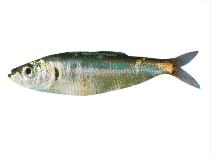| Family: |
Clupeidae (Herrings, shads, sardines, menhadens) |
| Max. size: |
12 cm SL (male/unsexed) |
| Environment: |
pelagic-neritic; marine; depth range 0 - 72 m |
| Distribution: |
Southwest Pacific: New Zealand. |
| Diagnosis: |
Dorsal spines (total): 0-0; Dorsal soft rays (total): 13-21; Anal spines: 0-0; Anal soft rays: 12-23; Vertebrae: 48-51. Upper jaw rounded and not notched on frontal view. Gill cover without bony radiating striae; tooth plate on tongue broad, almost oval, width about 3 times in length, lateral teeth strong; scales with fine radiating or horizontal striae on exposed posterior part; back steel blue when fresh. Pterotic bulla absent. Last two anal rays normal. |
| Biology: |
A schooling species in coastal waters. The biology probably resembles that of S. muelleri from which it has not usually been distinguished in earlier studies. Tends to occur in the bottom or midwater except during summer when surface shoals may appear; extends to deeper water in summer and retreats to close inshore for spawning during winter (Ref. 9258). Reported from surface (Ref. 188) to 72 m (Ref. 58489). |
| IUCN Red List Status: |
Least Concern (LC); Date assessed: 28 February 2017 Ref. (130435)
|
| Threat to humans: |
harmless |
Source and more info: www.fishbase.org. For personal, classroom, and other internal use only. Not for publication.

